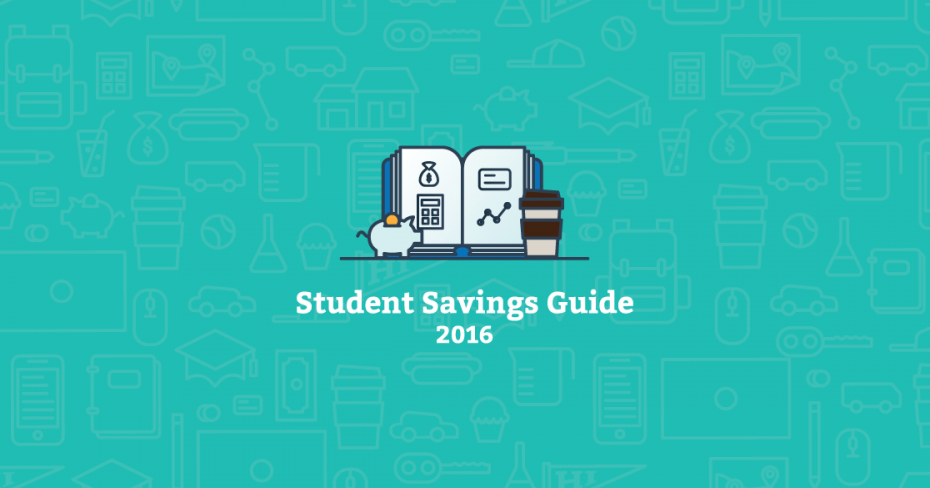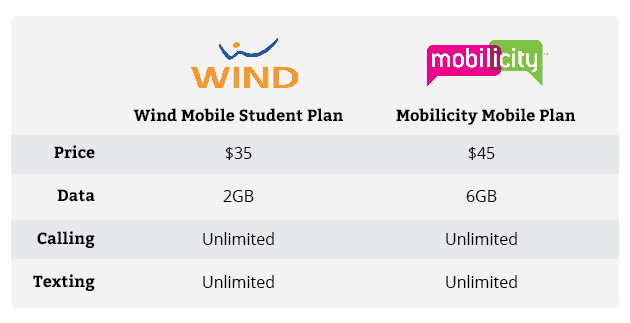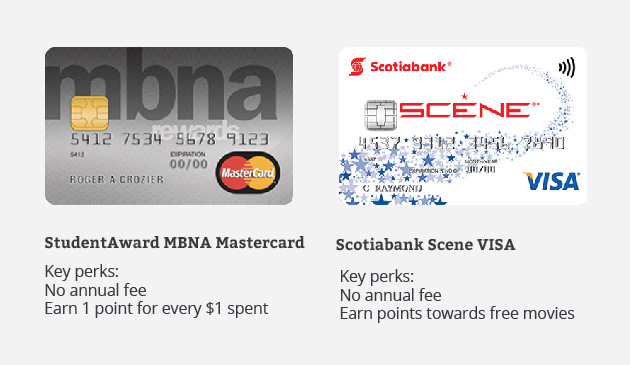LowestRates.ca's Back to School Money Saving Guide For Students
By: Thomas Sigsworth on August 18, 2016
Editor’s Note: We originally published the Student Savings Guide in August, 2013 (during the early days of LowestRates), and we’ve been updating and refreshing it every year since.
This year’s guide is the best one yet, and a huge amount of credit goes to our summer intern, Ankur Gupta, and our trusty content writer, Rebecca Lee. They both helped structure, research and write the guide, and their efforts have helped make it fresh and current for this year’s students.
Download full guide [PDF]It’s the start of a new school year and you’re feeling kind of optimistic — “I solemnly swear that I won’t pull any all nighters this year!” New term, new you.
Well, we’re optimistic too. About your finances.
As expensive as a post-secondary education is (fact: the average Canadian student graduates with about $27K of debt), there are many ways for you to spend smarter, save better, and stay in control of your finances. You just need to start with the right information.
So every August, we release a new savings guide for students. Although we can’t pay off your student debt (sorry, life isn’t that easy), we want to help you minimize and manage it.
This year’s guide is divided into 3 sections: funding your education, managing your everyday costs, and student-to-student advice. Bonus: a lot of this information is school-specific, so look out for mentions of your future alma mater.

SECTION 1: Funding your education
So you’re enrolled in university or college (hopefully at your top choice) — congratulations! This is an exciting investment in your future. But it is an investment, which means it’s going to take some money. Before you sign up for years of post-grad debt via a student loan, explore your options.
Get your school to pay
Most universities and colleges offer financial aid, bursaries, or scholarships. And the funding criteria is varied: it might be your income level, academics, or athletic talent that earns you a financial boost. Check your school’s website to see what funding you may qualify for.
Be someone’s investment opportunity
Businesses, charities, and foundations across the country want to invest in and support Canada’s future thought leaders. Take advantage of their generosity. Check out two of our favourite websites for finding these awards and opportunities:
- ScholarshipsCanada.com: 80,977 awards worth a total of $177,092,640
- yconic: $181,029,200 in total available funding

Get aid from the Federal and Provincial government
In Canada, both levels of government fund post-secondary student aid on a massive scale. Take some time to learn what financial aid is available and how to get a student loan. You can also figure out how much student aid you’re eligible for by using CanLearn’s Student Financial Assistance Estimator. And it’s our pleasure to tell you that, as of August 1, Canada Student Grants have increased by 50%. See below:
- From $2,000 to $3,000 per year for full-time students from low-income families
- From $800 to $1,200 per year for full-time students from middle-income families
- From $1,200 to $1,800 per year for part-time students from low income families
And one more happy change: starting November 1, students don’t have to begin repaying their loans until they start earning $25,000 per year.

SECTION 2: Your everyday costs
A room with a view (or not)
Most first-year students will live in residence, but you’ll probably want to explore different housing options in your upper years. Either way, here are the best ways to keep your housing costs down.
Split the rent
That’s what roommates are for — making your rent more affordable and your university experience more memorable (hint: parties).
Furnish frugally
You’re a student, so you may as well live like one. Buy used furniture online or from other students — particularly graduating students. Otherwise, borrow from family and friends. You might be surprised at how much stuff they have lying around that they’d be happy to pass on.
Buy renters insurance
We know renters insurance rarely (if ever) crosses your mind, but buying a policy is a small price to pay for a very big safeguard. If any of your belongings are stolen, damaged, or lost during your school year, renters insurance will pay for your repair or replacement costs. It also covers liability claims if someone is injured in your home.
Live in a non-premium area
Pick an inexpensive neighbourhood, like one that’s further from campus, and save $100s or $1,000s each month. It might mean a longer commute, but at least your rent will be cheap. Consider it a trade-off.
Check the listings on your school’s platform
Your university has an affiliated housing platform for off-campus listings. Do a Google search for “(your university) off-campus housing” to pull these listings and find landlords that your school has already vetted. For example, here’s U of T’s off-campus housing website.

One more thing: housing costs vary a lot from school to school. See how average student housing prices stack up at some of the most popular schools in Canada in our graphic below. The results might surprise you.
Hover over each pin to learn more.
Student Housing Costs Across Canada
Hover over pins to learn more!


University of Toronto

- Residence
- $8,379/yr
- Meal plan
- $4,751/yr
- Off-campus
- $800 - $1,400/mo
- Popular Neighbourhood
- The Annex
University of Ottawa

- Residence
- $8,509/yr
- Meal plan
- $4,450/yr
- Off-campus
- $550 - $800/mo
- Popular Neighbourhood
- Sandy Hill
Humber College

- Residence
- $6,071/yr
- Meal plan
- $2,350/yr
- Off-campus
- $650 - $950/mo
- Popular Neighbourhood
- Rexdale
Queen's University

- Residence
- $13,683/yr - meal plan included
- Off-campus
- $400 - $800/mo
- Popular Neighbourhood
- The Ghetto

Mount Allison University

- Residence
- $5,889/yr
- Meal plan
- $4,622/yr
- Off-campus
- $300 - $600/mo
- Popular Neighbourhood
- Student Ghetto
Dalhousie University

- Residence
- $7,325/yr
- Meal plan
- $3,775/yr
- Off-campus
- $600 - $1,000/mo
- Popular Neighbourhood
- South End
University of PEI

- Residence
- $10,260/yr - meal plan included
- Off-campus
- $300 - $550/mo
- Popular Neighbourhood
- Charlottetown
Memorial University of Newfoundland

- Residence
- $4,404/yr
- Meal plan
- $4,905/yr
- Off-campus
- $450 - $600/mo
- Popular Neighbourhood
- South St. John's
McGill University

- Residence
- $10,440/yr
- Meal plan
- $5,475/yr
- Off-campus
- $550 - $800/mo
- Popular Neighbourhood
- Downtown Montreal
Western University

- Residence
- $8,175/yr
- Meal plan
- $5,165/yr
- Off-campus
- $450 - $750/mo
- Popular Neighbourhood
- Medway District
University of Manitoba

- Residence
- $7,403/yr - meal plan included
- Off-campus
- $650 - $950/mo
- Popular Neighbourhood
- Downtown Winnipeg
University of Calgary

- Residence
- $7,382/yr
- Meal plan
- $4,065/yr
- Off-campus
- $750 - $1,000/mo
- Popular Neighbourhood
- St. Andrews Heights
University of Saskatchewan

- Residence
- $4,888/yr
- Meal plan
- $4,133/yr
- Off-campus
- $700 - $1,000/mo
- Popular Neighbourhood
- University Heights
University of British Columbia

- Residence
- $7,443/yr
- Meal plan
- $4,888/yr
- Off-campus
- $700 - $1,000/mo
- Popular Neighbourhood
- University Heights
Aurora College

- Off-campus
- $300 - $400/mo
- Popular Neighbourhood
- Yellowknife Campus
Yukon College

- Residence
- $3,660/yr
- Off-campus
- $400 - $700/mo
- Popular Neighbourhood
- Whitehorse
You’re going places

Getting to and from school is one of those ongoing costs that you don’t dwell on because, well, you have to get to class. But you should know which options make sense, i.e. don’t Uber to class. Unless you’re late for an exam.
Here are some other quick tips:
Skip the car and use public transit. You’ll cut out three car-ownership costs right off the bat: insurance, parking, and gas.
Don’t buy a transit pass yet. Most undergraduate institutions in Canada issue student IDs that double as bus passes.
If all else fails, use a car share for your longer journeys. It’ll always be cheaper than a taxi or an Uber.
Still wondering if you should get a car or tough it out on the bus? We weighed the transportation options and costs at some of Canada’s biggest schools. Maybe that’ll help you decide.
Select your school from the list below and check your transportation costs.
Student Transportation Costs
Memorial University of Newfoundland 

Car Insurance
The average car insurance rate for a 19-year-old driver living close to campus.
Vehicle: Honda Civic
- Male
- $110.87 per month
- Female
- $110.87 per month

Transit pass
$66/month  Student card
Student card Parking pass
Lottery system

 $5.00 per hour
$5.00 per hour


Car Insurance
The average car insurance rate for a 19-year-old driver living close to campus.
Vehicle: Honda Civic
- Male
- $110.87 per month
- Female
- $110.87 per month

Transit pass
 Student card
Student cardParking pass
Lottery system


Dalhousie University 

Car Insurance
The average car insurance rate for a 19-year-old driver living close to campus.
Vehicle: Honda Civic
- Male
- $610.08 per month
- Female
- $456.67 per month

Transit pass
 Free With student card
Free With student card Parking pass
$324.23 per year 
 $5.95 per hour
$5.95 per hour


Car Insurance
The average car insurance rate for a 19-year-old driver living close to campus.
Vehicle: Honda Civic
- Male
- $610.08 per month
- Female
- $456.67 per month

Transit pass
 Free
FreeParking pass


Mount Allison University 

Car Insurance
The average car insurance rate for a 19-year-old driver living close to campus.
Vehicle: Honda Civic
- Male
- $230.67 per month
- Female
- $230.67 per month

Transit pass
 Free With student card
Free With student card Parking pass
Free for students

 $10.00 per hour
$10.00 per hour


Car Insurance
The average car insurance rate for a 19-year-old driver living close to campus.
Vehicle: Honda Civic
- Male
- $230.67 per month
- Female
- $230.67 per month

Transit pass
 Free
FreeParking pass
Free for students


University of PEI 

Car Insurance
The average car insurance rate for a 19-year-old driver living close to campus.
Vehicle: Honda Civic
- Male
- $48.50 per month
- Female
- $48.50 per month

Transit pass
$45/month  Student card
Student card Parking pass
$118 per month 
 $5.95 per hour
$5.95 per hour


Car Insurance
The average car insurance rate for a 19-year-old driver living close to campus.
Vehicle: Honda Civic
- Male
- $48.50 per month
- Female
- $48.50 per month

Transit pass
 Student card
Student cardParking pass


McGill University 

Car Insurance
The average car insurance rate for a 19-year-old driver living close to campus.
Vehicle: Honda Civic
- Male
- $204.67 per month
- Female
- $155.50 per month

Transit pass
$49.75/month  18-25 year olds
18-25 year olds Parking pass
$577 per term 
 $14.99 per hour
$14.99 per hour


Car Insurance
The average car insurance rate for a 19-year-old driver living close to campus.
Vehicle: Honda Civic
- Male
- $204.67 per month
- Female
- $155.50 per month

Transit pass
 18-25 year olds
18-25 year oldsParking pass


University of Toronto 

Car Insurance
The average car insurance rate for a 19-year-old driver living close to campus.
Vehicle: Honda Civic
- Male
- $402.00 per month
- Female
- $313.25 per month

Transit pass
$112/month  Student card
Student card Parking pass
$1,070 per year 
 $9.95 per hour
$9.95 per hour


Car Insurance
The average car insurance rate for a 19-year-old driver living close to campus.
Vehicle: Honda Civic
- Male
- $402.00 per month
- Female
- $313.25 per month

Transit pass
 Student card
Student cardParking pass


Queen's Univeristy 

Car Insurance
The average car insurance rate for a 19-year-old driver living close to campus.
Vehicle: Honda Civic
- Male
- $248.08 per month
- Female
- $210.83 per month

Transit pass
 Free With student card
Free With student card Parking pass
$111.97 per month 
 $3.95 per hour
$3.95 per hour


Car Insurance
The average car insurance rate for a 19-year-old driver living close to campus.
Vehicle: Honda Civic
- Male
- $248.08 per month
- Female
- $210.83 per month

Transit pass
 Free
FreeParking pass


Western Univeristy 

Car Insurance
The average car insurance rate for a 19-year-old driver living close to campus.
Vehicle: Honda Civic
- Male
- $329.42 per month
- Female
- $251.42 per month

Transit pass
$70/month  Student card
Student card Parking pass
$460.15/year unreserved $917.35/year reserved 
 $10.00 per hour
$10.00 per hour


Car Insurance
The average car insurance rate for a 19-year-old driver living close to campus.
Vehicle: Honda Civic
- Male
- $329.42 per month
- Female
- $251.42 per month

Transit pass
 Student card
Student cardParking pass


Humber College 

Car Insurance
The average car insurance rate for a 19-year-old driver living close to campus.
Vehicle: Honda Civic
- Male
- $616.67 per month
- Female
- $544.58 per month

Transit pass
$112/month  Student card
Student card Parking pass
$578.00 per year 
 $10.00 per hour
$10.00 per hour


Car Insurance
The average car insurance rate for a 19-year-old driver living close to campus.
Vehicle: Honda Civic
- Male
- $616.67 per month
- Female
- $544.58 per month

Transit pass
 Student card
Student cardParking pass


University of Ottawa 

Car Insurance
The average car insurance rate for a 19-year-old driver living close to campus.
Vehicle: Honda Civic
- Male
- $258.50 per month
- Female
- $213.17 per month

Transit pass
$48.17/month  Student card
Student card Parking pass
Lottery system

 $3.95 per hour
$3.95 per hour


Car Insurance
The average car insurance rate for a 19-year-old driver living close to campus.
Vehicle: Honda Civic
- Male
- $258.50 per month
- Female
- $213.17 per month

Transit pass
 Student card
Student cardParking pass
Lottery system


University of Manitoba 

Car Insurance
The average car insurance rate for a 19-year-old driver living close to campus.
Vehicle: Honda Civic
- Male
- $145 per month
- Female
- $145 per month

Transit pass
$70.85/month  Student card
Student card Parking pass
Lottery system

 $2.50 per hour
$2.50 per hour


Car Insurance
The average car insurance rate for a 19-year-old driver living close to campus.
Vehicle: Honda Civic
- Male
- $145 per month
- Female
- $145 per month

Transit pass
 Student card
Student cardParking pass
Lottery system


University of Calgary 

Car Insurance
The average car insurance rate for a 19-year-old driver living close to campus.
Vehicle: Honda Civic
- Male
- $263.92 per month
- Female
- $228.75 per month

Transit pass
$99/month  Student card
Student card Parking pass
$800 - $1000 per year 
 $14.99 per hour
$14.99 per hour


Car Insurance
The average car insurance rate for a 19-year-old driver living close to campus.
Vehicle: Honda Civic
- Male
- $263.92 per month
- Female
- $228.75 per month

Transit pass
 Student card
Student cardParking pass


University of Saskatchewan 

Car Insurance
The average car insurance rate for a 19-year-old driver living close to campus.
Vehicle: Honda Civic
- Male
- $116.60 per month
- Female
- $116.60 per month

Transit pass
$83/month  Student card
Student card Parking pass
Lottery system

 $6.00 per hour
$6.00 per hour


Car Insurance
The average car insurance rate for a 19-year-old driver living close to campus.
Vehicle: Honda Civic
- Male
- $116.60 per month
- Female
- $116.60 per month

Transit pass
 Student card
Student cardParking pass
Lottery system


University of British Columbia 

Car Insurance
The average car insurance rate for a 19-year-old driver living close to campus.
Vehicle: Honda Civic
- Male
- $156.40 per month
- Female
- $156.40 per month

Transit pass
$38/month  Student card
Student card Parking pass
$640-760 per year 
 $14.99 per hour
$14.99 per hour


Car Insurance
The average car insurance rate for a 19-year-old driver living close to campus.
Vehicle: Honda Civic
- Male
- $156.40 per month
- Female
- $156.40 per month

Transit pass
 Student card
Student cardParking pass


There’s an app for that
Money management has changed a lot since your parent’s day. Now you can do it all — set your budget, track your spending, etc. — from your phone.
Here’s a list of our favourite personal finance apps and a rundown of how you can use them to develop smart money habits and hit new financial milestones.
-

Mint: You’re running out of reasons not to budget. Mint lets you create custom budgets and connect them directly to your bank account so you can track your spending in real time.
-

Acorns: Spare change? Or money seeds? Acorn rounds up the price of your purchases, takes the change, and invests it. Now you can spend your money and grow it at the same time.
-

Level Money: Need a plan for your money? Use Level Money to set targets and goals and stay on top of your payments.
-

Wally: By providing a 360° view of your spending habits, Wally helps you take control and hit your financial goals. Use Wally to build budgets, create timelines, and track payments.
-

Tilt: Your buddies paid for last night’s pizza? Pay them back through Tilt, a free, online platform for exchanging funds. Now splitting rent, utilities, and late-night eats is simple.
Your cell phone plan
If you’re like most of us, you keep your cell phone nearby at all times and use it for almost everything. The problem is that cell phone plans can be expensive, especially when you need enough data to keep your Snapchat story up-to-date. Or maybe you’re more of a frequent caller or an avid texter. Whatever your habits, make sure you know them and choose the right plan.
First, check if your school offers any student cell phone plans — they’re usually the cheapest option and, in most cases, you can retain the plan even after you graduate. Otherwise, here are two of our favourite, non-university-affiliated student plans that’ll give you maximum value.

Paying for it all
Should you get a credit card while you’re in school? Personal finance experts disagree on this question but we think it’s probably a good idea. Credit cards have many benefits – not only are they convenient, they also help build your credit score and some even earn you points or cash back.
Many credit card companies offer cards tailored to students. To find the best ones, check out our credit card section at LowestRates.ca. Here are two of our favourite student cards:

Some quick credit card tips:
- Aim to always pay your full balance on time
- Avoid extra fees on services like cash advances or ATM withdrawals
- Track your spending throughout the month
- Always review your statements — mistakes happen!
Eat well, spend less
Buying take-out everyday is tempting and easy, especially when you’re busy with school, but it makes meals more expensive than they need to be. Develop some new habits: grocery shopping and cooking. By shopping smart (aka not buying everything at the local convenience store), you can save $100s and eat better.
Besides, who said student meals can’t be cheap, healthy, and look good? Not the makers of these Instagram-worthy meals:
Frugal foodie tips
Use Flipp to shop the sales: Flipp is an app that pulls all the best deals into one streamlined feed. Just take a casual scroll through Flipp, navigate to your favorite brands, and save on your purchases.
Look at unit prices: Groceries come in all shapes and sizes, so don’t be fooled by sophisticated packaging. Instead, check the unit price of the items you’re buying. Most foods come with the unit prices displayed at the bottom, expressed as volume (ml) or weight (grams).
Stock up on staples… when they’re on sale: Pasta, flour, canned fish, olive oil, etc. — stock up when your favourite staples come on sale.
Don’t shop hungry: You know why — hunger can overwhelm the judgement of even the most frugal shopper.
Look high, look low: Grocery retailing is a science. Stores place the most expensive and highest margin items at eye level, where they’re easiest to see and easiest to reach. Search the upper and lower shelves for better bargains.
Think ‘scanner price’ accuracy code: What’s the code? Basically, if the scanned price at checkout is higher than the price displayed in the store, most retailers will honour the lower price.
Homemade brew
Want another easy way to save a bit of money? Make your morning coffee at home instead of buying it on the way to class. You’ll be amazed at how much you can save in just 1 month. And with those savings, you’ll have extra money for your bigger purchases or for emergencies.
And just how much can you save each month if you stop buying your daily coffee?
Hover over each coffee cup to find out.
Cost of Coffee


- Medium coffee:
(Tax included) - $2.02
- Mug discount:
- NO
- Yearly coffee savings:
- $404*


- Medium coffee:
(Tax included) - $1.93
- Mug discount:
- YES
- Yearly coffee savings:
- $386*


- Medium coffee:
(Tax included) - $2.43
- Mug discount:
- YES
- Yearly coffee savings:
- $486*


- Medium coffee:
(Tax included) - $2.37
- Mug discount:
- YES
- Yearly coffee savings:
- $474*
* 1 coffee a day for 200 days of school per year.
You may miss your Timmies and Starbucks for now, but one day you'll be able to buy all the damn lattes you want.
Everyday quick tips
We have a few more tips that you should keep in mind to help you save money.
Don’t buy brand new textbooks: While textbooks are required for certain classes, you can just buy them used or online (read: not at your university bookstore). You can also get the e-reader version or borrow from a friend who has taken the class before. If you don’t think you’ll use a particular textbook listed in the course materials, try finding it at your university library; all required textbooks for every class are kept on file for reference.
Start growing your money: A great way to save for your future is by contributing to a tax-free savings account and earning interest. Put some money aside from your part-time job every month and watch your money grow
Sign up for an SPC card: Student Price Cards are widely accepted and can get you discounts at restaurants, grocery stores, and more. Just show your card and you can save 10% to 20% at participating businesses.
SECTION 3: From one student to another
So now that you’ve learned (hopefully) a thing or two about saving money, we want to share what recent grads and soon-to-be-grads had to say about their finances. We surveyed students from all across the country and asked them, “What’s one thing you wish you knew about money when you were a student?”

Olivia
Twitter: @livdun456
Instagram: @livdun
Memorial ‘16
On Tuesdays as a student at Sobeys you save 10% so it's an easy way to save while grocery shopping. As well as making meals and eating leftovers for lunch saves time and money!

Kate
Twitter: @katecourtney
Instagram: @_kcwalker
Western University ‘17
I wish I knew more about budgeting my spending money during the school year. To know how much to spend on non-related school things vs. how much to save towards tuition each year, so that each year student debts would lower or balance out.

Marnie
Facebook: Marnie Nicole
Instagram: @marniebreed
Carleton University ‘16
Stocks and taxes. These are crucial for business students success and despite what's taught in accounting and finance, there is limited offering for commerce students to learn about how to manage real finances and their affect on us in our adult years.


Anuj
Twitter: @ajarora_
Instagram: @anujarora_
Queen’s University ‘17
When I was earlier in my University career, I really wish I knew more about mortgage loans - and real estate investment as a whole. If I could go back, I would have set aside money every month to add to my real estate investment fund, and by the time I graduated, I would have had enough money set aside to put a down payment on a condo.
Oh, the places you’ll go
So that was a lot of information. How are you feeling? Maybe a little better about your finances? Well, you should. You just took your first steps towards greater financial awareness, so give yourself a pat on the back. Hopefully you’ve learned a thing or two and enjoyed reading along the way.
Whether it’s using a coupon or looking for the right scholarship, there are a ton of ways to save money. It’s important to understand that and not be overwhelmed by the daunting cost of school. Thanks for taking the time to help LowestRates.ca combat Canadian student debt and congrats again on taking on the challenge of a post-secondary education. We wish you the best of luck!



